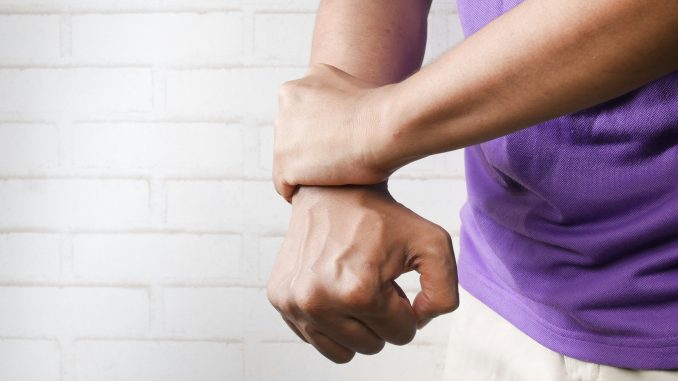

- Wear properly fitted compression garments to prevent fluid buildup and promote lymphatic drainage.
- Use compression pumps and gentle exercises, under professional advice, to improve lymph flow.
- Practice skin care and manual lymphatic drainage to reduce swelling and prevent infections.
- Adopt a balanced diet, stay hydrated, wear loose clothing, and ensure adequate rest to manage symptoms.
Lymphedema is a chronic condition that causes swelling in the arms or legs due to a blockage in the lymphatic system. It can be caused by surgery, radiation therapy, infection, or other medical conditions. Managing lymphedema can be challenging, but with the right strategies and tools, it is possible to reduce symptoms and improve quality of life. This blog will discuss essential tips for managing lymphedema effectively.
Compression Garments
Wearing compression garments such as sleeves or stockings can help reduce swelling and improve circulation in the affected limb. These garments apply pressure to the area, preventing fluid buildup and promoting lymphatic drainage. It is important to get fitted for compression garments by a healthcare professional to ensure they are the right size and provide the necessary support.
Compression Pumps
In addition to compression garments, some people with lymphedema may benefit from using a compression pump. This device uses air pressure to massage the affected limb and encourage lymphatic flow. It is important to consult with a healthcare professional before using a compression pump. Additionally, make sure you buy a compression pump that is specifically designed for lymphedema management.
Exercise

Gentle exercise can help improve lymphatic flow and reduce swelling in the affected limb. Activities such as walking, swimming, yoga, or tai chi can promote circulation and reduce fluid buildup. It is essential to consult with a physical therapist or lymphedema specialist before starting an exercise routine to ensure it is safe and appropriate for your condition. You may also need to wear compression garments during exercise for added support.
Manual Lymphatic Drainage
This specialized massage technique can help stimulate lymphatic flow and reduce swelling in the affected limb. A trained therapist can perform manual lymphatic drainage using gentle strokes that encourage fluid movement toward healthy lymph nodes.
Regular sessions of manual lymphatic drainage can help manage symptoms of lymphedema and improve overall well-being. You can also learn how to perform self-manual lymphatic drainage at home by following the guidance of a therapist or using instructional videos.
Skincare
People with lymphedema are at higher risk of developing infections due to compromised immune function in the affected limb. Proper skin care is essential to prevent infections and maintain skin health. Keeping the skin clean and moisturized, avoiding cuts or injuries, and protecting against sunburn are important steps to take when managing lymphedema. You may also need to use specialized skincare products recommended by your healthcare provider.
Healthy Lifestyle Habits
Maintaining a healthy lifestyle can also help manage symptoms of lymphedema effectively. There are plenty of things you can do to promote overall well-being. Here are four essential lifestyle habits to incorporate into your daily routine:
Eat a Balanced Diet Rich
Eating a balanced diet with plenty of fruits, vegetables, whole grains, and lean proteins can help support the immune system and promote overall health. Limiting salt intake is also important for managing lymphedema, as excess salt can contribute to fluid retention.
Stay Hydrated

Drinking enough water is crucial when managing lymphedema. Staying hydrated helps flush out excess fluids from the body and keep the lymphatic system functioning properly. Aim for at least eight glasses of water a day or more if you are physically active.
Avoid Tight Clothing
Tight clothing can restrict lymphatic flow and contribute to swelling in the affected limb. It is important to wear loose-fitting clothes that do not constrict circulation. This is especially important when traveling by air, as the changes in cabin pressure can worsen symptoms of lymphedema.
Get Enough Rest
Adequate rest and sleep are essential for repairing and maintaining overall health. Getting enough rest can also help manage stress, which is a common trigger for lymphedema flare-ups. Make sure to prioritize getting quality sleep each night to support your body’s natural healing processes.
By maintaining a healthy lifestyle, you can support your body’s natural ability to manage lymphedema and reduce symptoms.
Managing lymphedema requires a comprehensive approach that combines medical guidance, self-care tactics, and lifestyle modifications. By utilizing compression methods, engaging in recommended exercises, understanding proper skincare, and adhering to healthy daily habits, individuals can take significant steps toward managing the effects of lymphedema.
Remember to consult with your healthcare provider for tailored advice, as each case can be unique. By staying informed, proactive, and positive, you can lead a more comfortable and fulfilling life while dealing with lymphedema. Stay empowered and take control of your health journey.